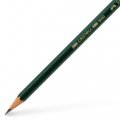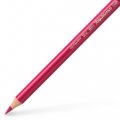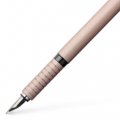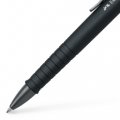Faber-Castell fountain pens
Faber-Castell, a traditional company based in Stein near Nuremberg since 1761, is not only known for its high-quality lead and colored pencils: The range also includes fountain pens with which you can show off your individual handwriting.
Faber-Castell fountain pen: ink meets class
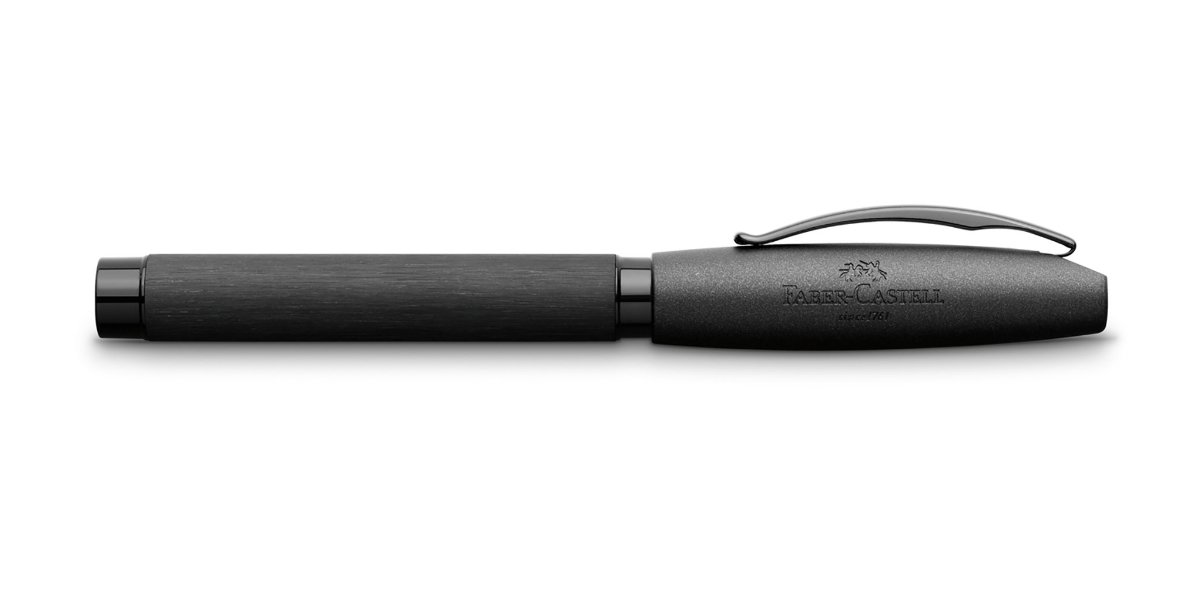
Faber-Castell produces more than 2 billion pencils and colored pencils every year. But that's not all: Faber-Castell fountain pens also impress fans of high-quality writing instruments.
Beginners benefit from the fact that a Faber-Castell fountain pen adapts to the writing posture and the individual pressure with which the letters are put on paper. Experienced writers appreciate the elegant typeface and the dynamic stroke that fountain pens offer in contrast to ballpoint pens. The exclusive look of a high-quality Faber-Castell fountain pen should also not be underestimated when it comes to signing important documents and contracts.
What distinguishes Faber-Castell fountain pens?
Faber-Castell fountain pens are equally suitable for right-handed and left-handed users. Only the brand's school fountain pens are an exception to this rule. They have differently shaped grips that make it easier for children to hold the pen correctly. All other variants can be used in a variety of ways. Their nibs, usually made of stainless steel, are equipped with a specially polished iridium grain that meets a wide range of requirements.
Interesting to know: Regardless of whether the nib of your fountain pen is made of softer gold or cheaper stainless steel, the iridium grain at the tip of the nib comes into contact with the paper. Thanks to its robust properties, it protects the nib against abrasion regardless of its material.
Your Faber-Castell fountain pen and the nib size
The nib of a fountain pen adapts to its user over time due to the pressure exerted and the respective angle when writing. For a good writing flow, it is important that the nib of your Faber-Castell fountain pen rests evenly on the paper when writing. This is the only way for the ink to flow. The strength of the fountain pen nib should be matched to your handwriting.
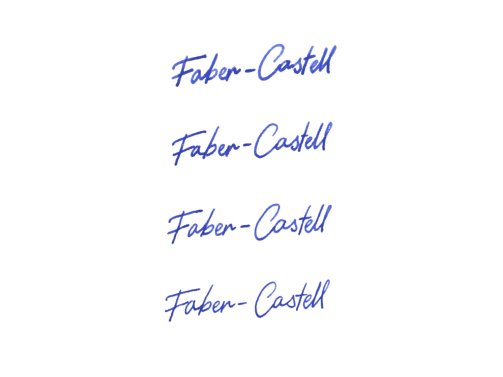
Extra-fine or fine?
If you want to put your letters on paper easily, you can opt for a Faber-Castell fountain pen with an extra-fine nib. Your writing will appear delicate and small letters will stand out. Your writing posture should be as straight as possible so that the pen glides comfortably over the paper and does not scratch, as the entire writing pressure is concentrated on a very small contact surface. You can recognize an extra-fine nib by the abbreviation EF.
Behind a capital F is a fine nib variant that offers you ideal conditions if your handwriting is small and you write with little pressure. This nib size also requires you to place the Faber-Castell fountain pen accurately on the paper.
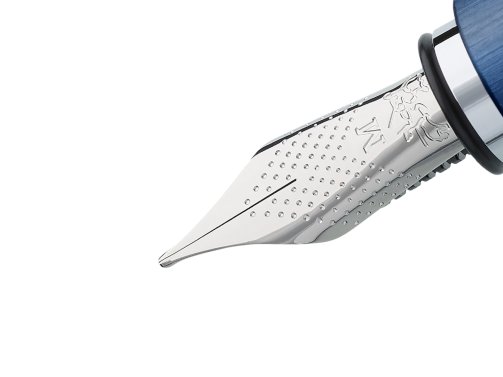
Medium-wide or wide?
A nib marked M is a real all-rounder. It harmonizes with almost any handwriting with an average writing pressure. It offers you a medium-width stroke and is suitable for almost any writing angle, so that even left-handers can write very comfortably with an M nib.
If you prefer your handwriting to appear stronger, a Faber-Castell fountain pen with a broad nib - abbreviated with a capital B - is the ideal choice. It is particularly suitable for sweeping hand and distinctive signatures and makes your stroke appear expressive and bold.
Interesting fact: Around 90% of the nibs used in fountain pens are of width M. This is also reflected in our range.
Ink cartridge or ink converter?
Whether classic, colorful or document-proof: You can use Faber-Castell fountain pens with either classic standard ink cartridges or an ink converter from our fountain pens and accessories section. The decision for one of the two systems only affects the handling of refilling, but not the writing experience.
If you opt for a converter so that you can choose from a wider range of inks for your writing, it is important to note the following: The more pigment-rich the ink you use, the more important it is to clean your Faber-Castell fountain pen regularly. For blue ink, Faber-Castell recommends a frequency of around three months, while Faber-Castell fountain pens used with colored ink should be cleaned every four weeks. Even if your fountain pen has dried out or you want to change the writing color, it is advisable to clean the pen with lukewarm water.
Faber-Castell fountain pen for frequent and occasional writers
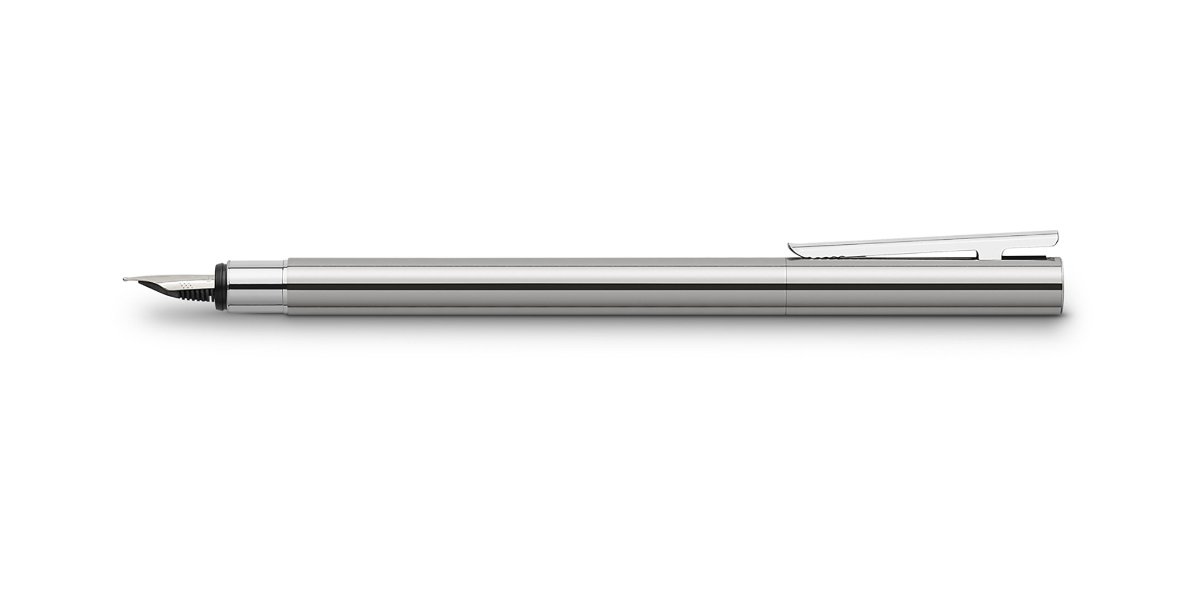
Small, large, slim or bulbous models, variants made of precious resin, metal or wood: Faber-Castell fountain pens impress with their versatility. The range includes compact models for everyday use as well as fountain pens for special occasions.
Tip: Use the proportions of your hand as an initial guide to assess which Faber-Castell fountain pen offers you the greatest writing comfort in terms of size. Very slim designs such as the Neo Slim impress with their elegant look. However, they require a tight grip, which can put more strain on the muscles when writing. Faber-Castell fountain pens with a larger diameter make it easier for you. The same applies to fountain pens made of plastic or precious resin. With the exception of aluminum pens such as the Essentio, they weigh less than wooden and metal models. Ultimately, however, the decision for a particular material is purely a matter of taste. If your heart beats for the special charm of a Faber-Castell wooden fountain pen, you are guaranteed to enjoy the writing instrument of your choice with every handwritten note.
P.S. Also discover the Faber-Castell ballpoint pens in our range. These uncomplicated and robust pens are a practical addition to your fountain pen.
